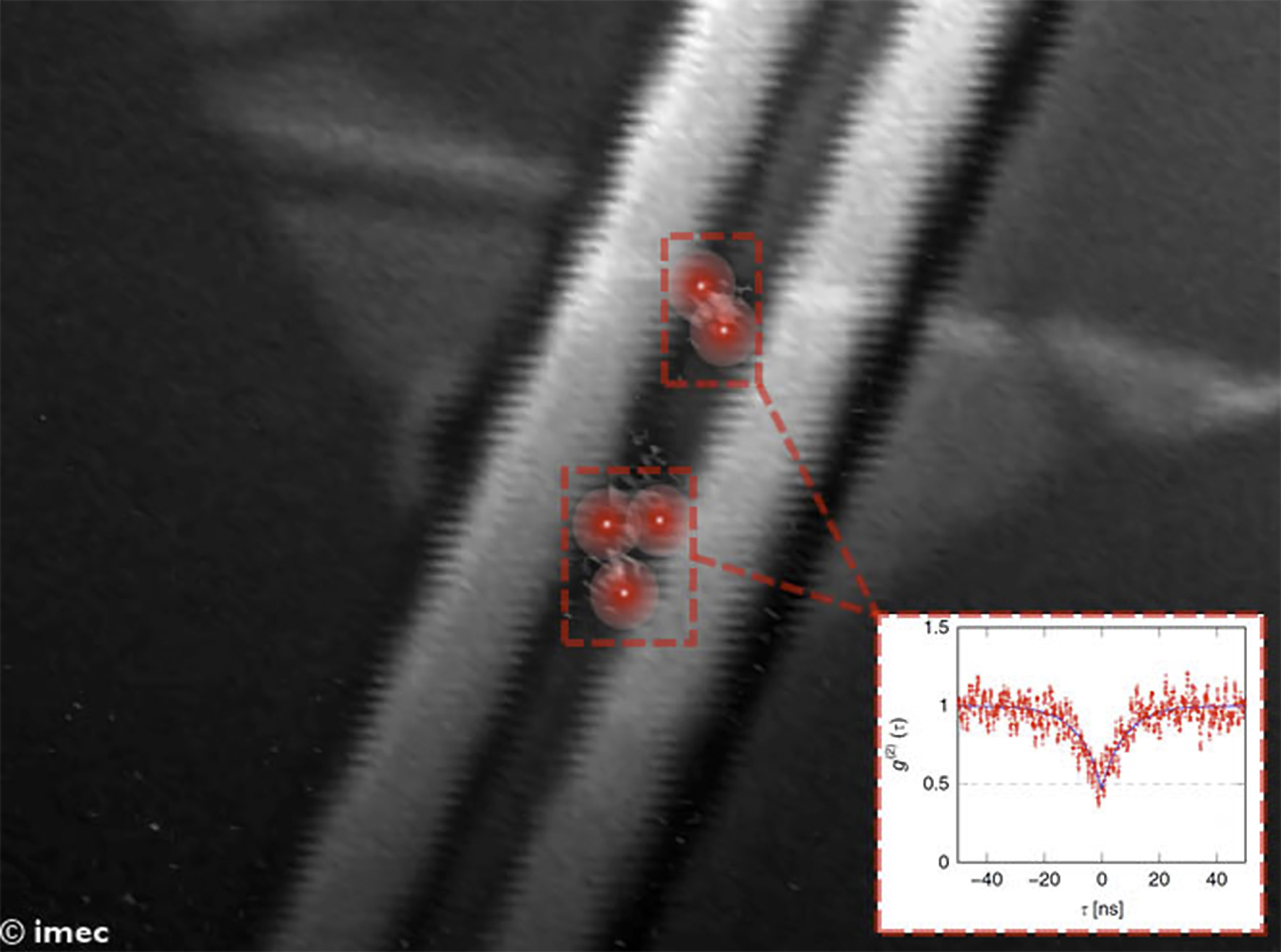Researchers provide route to scalable quantum photonics

Picture: 2D monolayer on a SiN waveguide.
Researchers from the Photonics Research Group, an imec research group at Ghent university and MIT have announced that they have integrated single photon emitters in 2D layered materials with a Silicon Nitride photonic chip. Even for moderate quantum yields, dielectric cavities could be designed such that the single photon extraction into the guided mode can reach unity. The results, published in Nature Communications, provide a crucial step in fundamental quantum photonics and 2D materials research.
Photonic integrated circuits (PICs) enable the miniaturization of complex quantum optical circuits connecting large numbers of photonic devices with optimized insertion losses and phase stability. A central building block for such an integrated quantum circuit is a single photon emitter (SPE), and a variety of material systems have been investigated to create such on-chip SPEs. 2D-based SPEs have some unique properties that make them particularly appealing for integration with PICs. First, they can be easily interfaced with PICs and stacked together to create complex heterostructures. Second, due to their thinness, and the absence of total internal reflection, they enable very high light extraction efficiencies without the need of any additional processing, allowing efficient single photon transfer between the host and the underlying PIC. Third, 2D materials grown with high wafer-scale uniformity are becoming more readily available.
Through nanoscale strain engineering, the team coupled 2D-based SPEs with a CMOS-compatible Silicon Nitride waveguide. Moreover, they extracted crucial performance parameters for this source and used them in an optimization analysis to maximize single photon extraction and indistinguishability into the guided mode. It was found that even for moderate quantum yields, dielectric cavities could be designed such that the single photon extraction into the guided mode can reach unity.
“These results provide a crucial step in scaling up quantum photonic devices using 2D-based integrated single photon sources,” stated Frédéric Peyskens, first author of the paper.



































